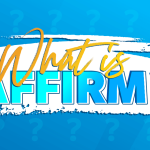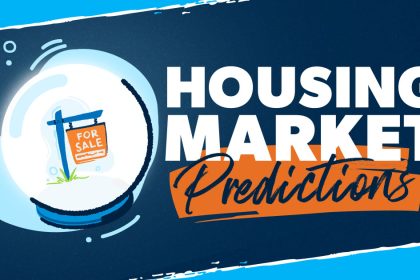Our debt counselors know that managing your finances is not straightforward. It has its unique set of challenges and sensitivities that you must carefully deal with at all times. Credit is a big part of the construct of your overall finances. Your financial acceptance as a responsible person depends largely on how you maneuver your credit journey. How you manage your consumer credit says a lot about your financial responsibility and credibility. Therefore, understanding the basics of credit is crucial for your overall financial management journey. This post is dedicated to the concept of secured and unsecured credit cards.
What is Credit
Credit is the ability to buy something now but pay for it later. Using credit can be incredibly convenient. However, it can also be the source of financial troubles for people who have difficulty controlling their spending. The general term credit in a financial management perspective can also refer to your credit score. This is a number from 300-850 that tells lenders how creditworthy you are. The higher your score, the more attractive you are to lenders and creditors. Your credit score is based on your use of credit in the past and how likely you are to repay loans in a timely way. Knowing how to manage credit and how to improve your credit score are essential skills for managing money and reaching your financial goals. So how exactly do you establish credit? Where do you begin?
Secured and Unsecured Credit Explained
Secured Credit Cards
No one starts off with a credit history. If you are starting your independent financial journey, the best place to start might be a secured credit card. This is a method used by lenders to establish your creditworthiness. These types of credit cards are identical to the unsecured ones. The only difference is that you have to make a minimum deposit also known as a security deposit to receive a credit limit.
These types of cards are usually targeted to consumers who are trying to build their credit from scratch or people trying to rebuild their credit. The security deposit typically acts as collateral if a default may occur. This deposit is fully refundable as and when you upgrade to an unsecured card or payoff the balances in full and close your account.
Your credit limit is often the amount you put down as a security deposit when it comes to this type of credit card. For example, if your security deposit was $200, your credit limit will also be $200. If you need a larger credit limit on your card, you will simply need to put down a larger security deposit. These deposit amounts typically range from $200 to $2500.
More on Secured Credit:
Some lenders do offer the flexibility of increasing your credit limit on your secured card without an additional deposit under certain conditions. For instance, you must make the first five payments on time in order for you to be eligible for an increase in credit limit. This can also act as an incentive to practice responsible credit behavior.
Like any other form of credit, you will pay interest and fees if you carry a balance month to month. Therefore, paying your secured credit card dues on time and in full is the only expectation you must fulfill. This is essentially a way to establish your credit. Your responsible payment history is a good reflection on your credit report and a solid foundation to building a good credit score. Maxing out on your secured credit cards or missing payments can reflect negatively on your credit report. Like any other form of credit, your secured credit lines are also the three main credit bureaus.
How to Apply for a Secured Card
Applying for any credit card must have the appropriate amount of research. Depending on your financial objectives and your requirement you must speak with your potential lenders to find the most suitable choice. Once you do, you will need to provide the following information:
- Name
- Date of birth
- Address
- Social Security number
- Employment information
- Income
Unsecured Credit Cards:
These are the most common type of credit cards. Generally, if someone says they are applying for a credit card they are applying for an unsecured credit card. The term unsecured means that this type of credit card is not protected by collateral. Essentially if you fail to make payments, there is no deposit that the lender keeps as security.
The general principle of debt is, once a lender gives out a debt they expect to be repaid. There are different types of debts. If a consumer is unable to repay debt such as their mortgage or auto loan, they are able to seize or repossess the assets to cover their dues. However, the riskiest type of debt is the topic in discussion, unsecured debts. This is because unlike any other debt, this type of debt does not hold collateral. This is why lenders impose conditions such as interest and financial charges on consumers who fail to make their dues on time on their credit accounts.
How Can You Get Unsecured Credit Cards?
Lenders analyze the financial history and responsibility of consumers when a consumer applies for an unsecured credit card. The tools they use to do that is the consumer’s credit rating and credit history. This is an unbiased tool to gauge the consumer’s financial responsibility. Your credit limit depends on your credit rating. Depending on how you manage your unsecured credit cards, lenders extend your credit limit. If you are using your credit lines responsibly, making payments on time, this is a fool-proof way to build your credit.
You may even notice that you are receiving credit card offers from different lenders as you go along your credit journey. This is a good sign as your lenders are seeing you as a financially responsible person to offer credit to. However, it does not mean that you accept every credit card offer that comes your way. You must always stay true to your needs. Do you really need a travel credit card or will you do better with a credit card that gives you higher cashback? What are the annual fees, interest rates, and other financial charges looking? Are they in line with your overall financial objectives?
Once you establish a credible credit history obtaining an unsecured credit card is not hard. However, using them responsibly is the harder part. How are these different credit lines impacting your overall debt management process? If you have derailed along the way and have more credit card debt than you can handle, then you should not waste any time seeking help. Depending on the extent of your debt, you may even need credit debt counseling with a reputable credit counseling agency.
Secured and Unsecured Credit Cards
Whilst a secured credit card is a good stepping stone into building your credit an unsecured credit card is a better choice in the long run. If you compare secured and unsecured credit cards the latter offers more perks, rewards, flexibility, and room to grow in your credit journey. Generally speaking, unsecured credit cards are a better deal for consumers. When a card is unsecured, this means you don’t have to put down a deposit as collateral. Unsecured credit cards also tend to come with better perks and rewards, lower fees and lower interest rates. Bankrate gives a great comparison between secured and unsecured credit cards against some key variables.
| Unsecured credit cards | Secured credit cards | |
| Deposit required? | No | Yes |
| Minimum credit score to qualify | Usually 670+ | Available for scores below 579 |
| Average APR | Over 16 percent | APRs tend to be higher for secured credit cards |
| Annual fee charged? | Sometimes | Usually |
| Helps you build credit by reporting to credit bureaus | Yes | Yes |
| Are rewards available? | Yes, with many rewards credit cards | Few secured credit cards offer rewards |
Source: Bankrate
In Conclusion:
Your financial journey is complex. Credit is a crucial part of it. How you choose to deal with it is entirely up to you. The more responsible and committed you are to making a positive footprint you will be at the better end of the bargain. For any unforeseen reason, if you are in financial distress it is best that you reach out to reputable credit counselors to get back on track.
Read the full article here

















